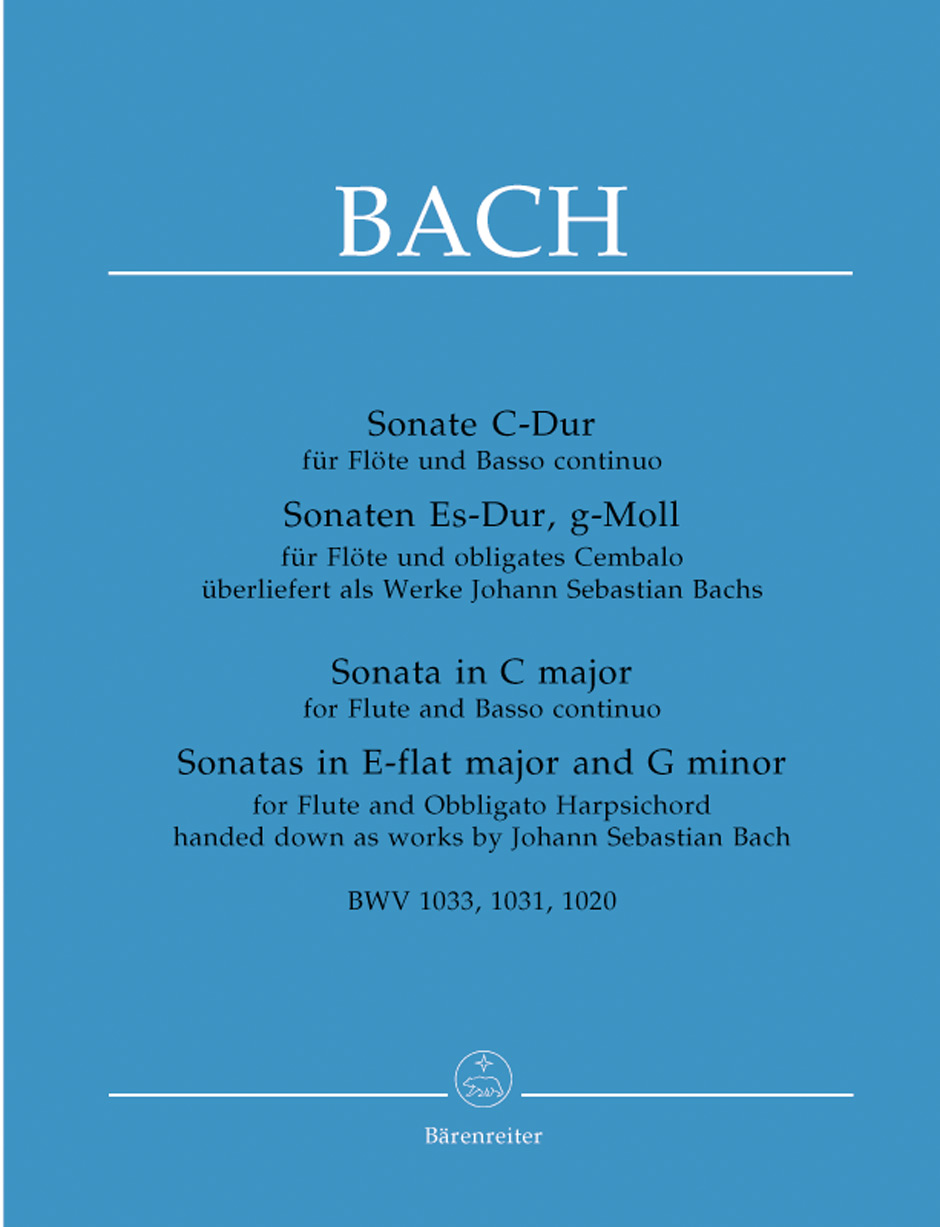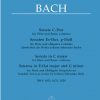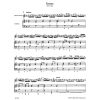Description
The Bärenreiter Bach 3 Sonatas Flute in C major for both Flute and Basso continuo, sonatas in E-flat major and G minor for Flute and Obbligato Harpsichord.
Bach’s preferred instrument for chamber music, after the Violin, was the traverse Flute. Yet today it is impossible to determine exactly how much music he wrote for this instrument or the genesis of those compositions that survive.
Our edition includes a preface (Ger-Eng) by Bach scholar Alfred Dürr and a report (Ger-Eng) listing the sources with source analysis.
Bärenreiter Bach 3 Sonatas Flute Three Sonatas:
BWV 1033 in C major for Flute and Basso Continuo.
BWV 1031 in E-flat major
BWV 1020 in G minor for Flute and obbligato Harpsichord.
Handed down as works by Johann Sebastian Bach
Edited by Alfred Dürr, in standard notation, medium to higher level of difficulty
About Johann Sebastian Bach (1685-1750)
Composer
Johann Sebastian Bach (1685-1750) is one of the great composers in Western musical history. He was born in Eisenach, Germany, into a family of working musicians. In 1695, when he was just nine years old, his parents died and he was sent to live with his brother, Johann Christoph, an organist. Whilst living with his brother he learnt the keyboard and studied composition on his own.
He worked as an organist, then as a court composer at Cöthen (now Köthen) and then as musical director at St Thomas’s church in Leipzig, producing many hundreds of choral and instrumental works (and hundreds of thousands of pages of handwritten parts).
Bach married twice and fathered eight surviving children, three of whom became notable composers in their own right. He was a devoutly religious man, and knew tragedy: his first wife died suddenly while he was away on business; 12 of his 20 children died in infancy; one of his sons had severe learning difficulties; and another ran away from home in his teens and died in mysterious circumstances.
Bach’s style is baroque, characterised by lots of notes, simple motoric rhythms, and steady shifts of underlying harmony – it was derided by some as ‘sewing-machine music’. But he explored harmony much more deeply than other composers of the time: compared to say Handel or Vivaldi, Bach’s music can contain extraordinarily ‘jazzy’ chords and surprising dissonance, and will jump off to many different harmonic areas.
Bach’s thousand-plus works enjoyed relatively little appreciation in his lifetime. His music was considered a little old-fashioned for its time, enjoyed only by connoisseurs, the rest as they say is history.
Get your Bärenreiter Bach 3 Sonatas Flute book at Trax Music Store now.








